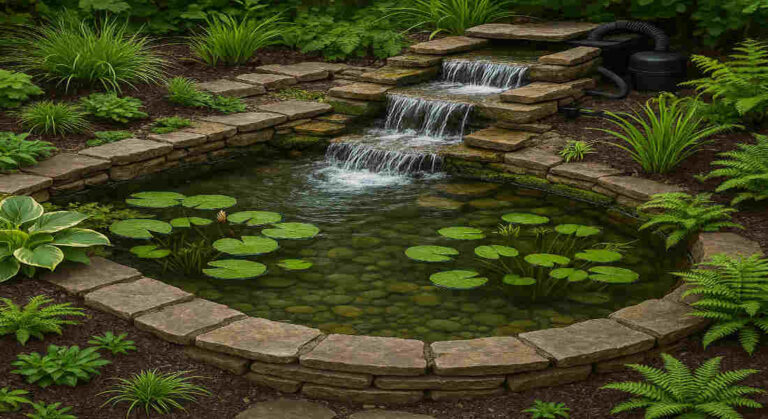Imagine stepping into your garden and being greeted by the soothing sound of cascading water, lush greenery framing the scene, and a charming pond teeming with life. Garden ponds with waterfalls are more than just landscaping features; they are tranquil oases that can transform any outdoor space into a serene retreat.
The allure of a garden pond lies in its ability to combine natural beauty with a sense of relaxation. Whether you’re seeking a peaceful spot to unwind or a way to attract wildlife like birds, frogs, and dragonflies to your garden, a pond with a waterfall can deliver both functionality and aesthetic appeal.
Understanding Garden Ponds and Waterfalls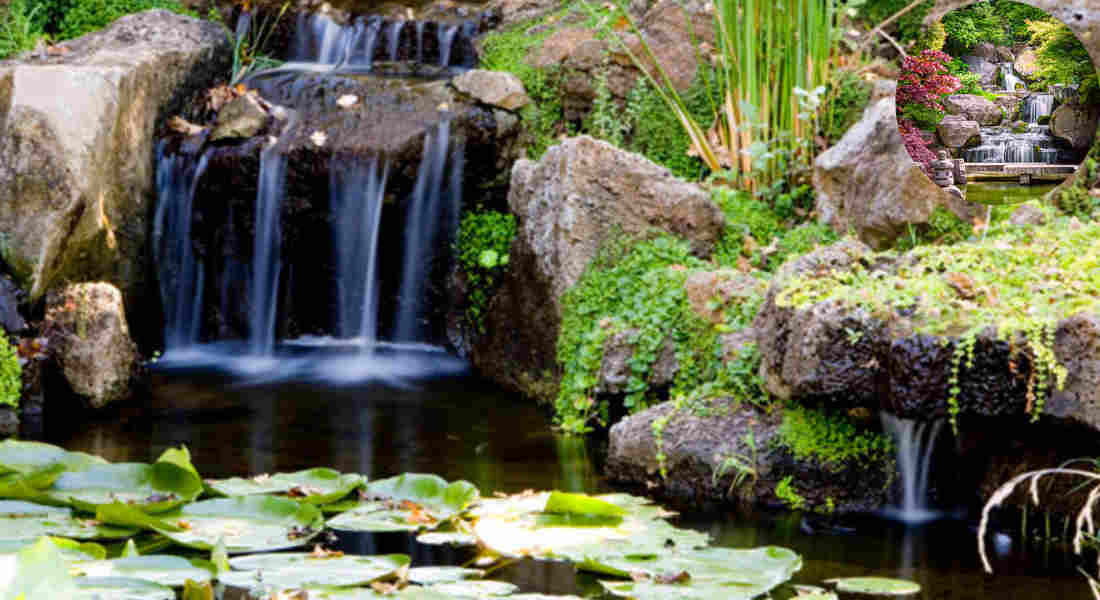
What is a Garden Pond with a Waterfall?
A garden pond with a waterfall is an artificial water feature that combines a still-water pond with a flowing waterfall. The pond forms the base, while the waterfall adds movement and sound to the design. Together, they create a harmonious balance that feels like a slice of nature in your backyard.
Styles of Garden Ponds and Waterfall Designs
When designing your pond, there are several styles to choose from:
- Naturalistic Ponds: Mimic natural water bodies with irregular shapes, rocks, and plants.
- Formal Ponds: Feature clean lines and geometric shapes and often pair well with modern landscaping.
- Modern Ponds: Incorporate sleek designs with materials like concrete and glass to achieve a contemporary look.
Each style can be paired with different waterfall designs, from gentle cascades to dramatic drops.
Benefits of Adding a Waterfall
Waterfalls are more than just beautiful additions; they offer several practical benefits:
- Soothing Sound Therapy: The sound of flowing water creates a calming ambience.
- Oxygenation: Moving water aerates the pond, keeping it healthy for fish and plants.
- Visual Appeal: Waterfalls add movement and reflect light, creating a dynamic focal point that enhances the overall aesthetic.
Considerations for UK Gardens
In the UK, there are specific factors to keep in mind:
- Climate: UK weather can be unpredictable, so ensure your pond materials and plants are weather-resistant.
- Space: Even small gardens can accommodate a pond, but choose your size wisely based on available room.
- Regulations: Check with your local council for any rules regarding water features, especially if you’re installing electrical components like pumps.
Planning Your Garden Pond and Waterfall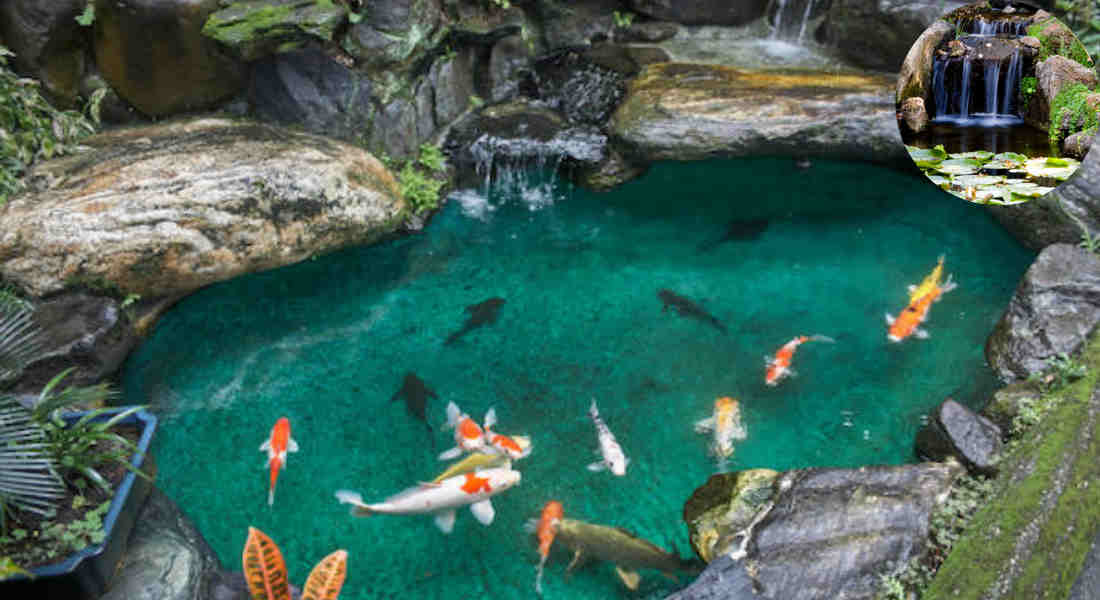
Before building your pond, careful planning is essential. Let’s break it down step by step.
Assessing Your Garden Space
Location is key! Consider these factors when selecting the ideal spot:
- Sunlight: Most aquatic plants need sunlight, but too much can cause algae growth. The partial shade is perfect.
- Slope: A slight incline can make it easier to create a natural-looking waterfall.
- Accessibility: Ensure the pond is easily accessible for both maintenance and enjoyment.
Choosing the Right Size and Shape
The size and shape of your pond will depend on your garden layout and personal preferences. While round ponds are classic and versatile, irregular shapes can create a more natural feel.
Pond SizeRecommended Use
Small (1–2m²) Ideal for small gardens with simple water features.
Medium (3–5m²) Suitable for adding fish, plants, and a small waterfall.
Large (6m² or more) Perfect for elaborate designs, multiple waterfalls, and diverse ecosystems.
Materials You’ll Need
To build a pond with a waterfall in the UK, you’ll need:
- Pond Liners: Flexible liners, such as EPDM, are durable and easy to shape.
- Rocks and Stones: For the waterfall and edges.
- Pumps and Filters: Essential for water circulation and keeping the pond clean.
- Plants: Choose native UK species, such as water lilies and marsh marigolds.
Budgeting for Your Project
Building a pond can range from a low-cost DIY project to a more expensive professional installation. Here’s a rough breakdown:
- DIY: £200–£600
- Professional: £1,000–£5,000+
Permits and Regulations
In the UK, you may need to follow local regulations, especially if you’re using electrical equipment or significantly altering your garden’s layout. Always check with your local council.
Step-by-Step Guide: How to Build a House Garden Pond with Waterfall UK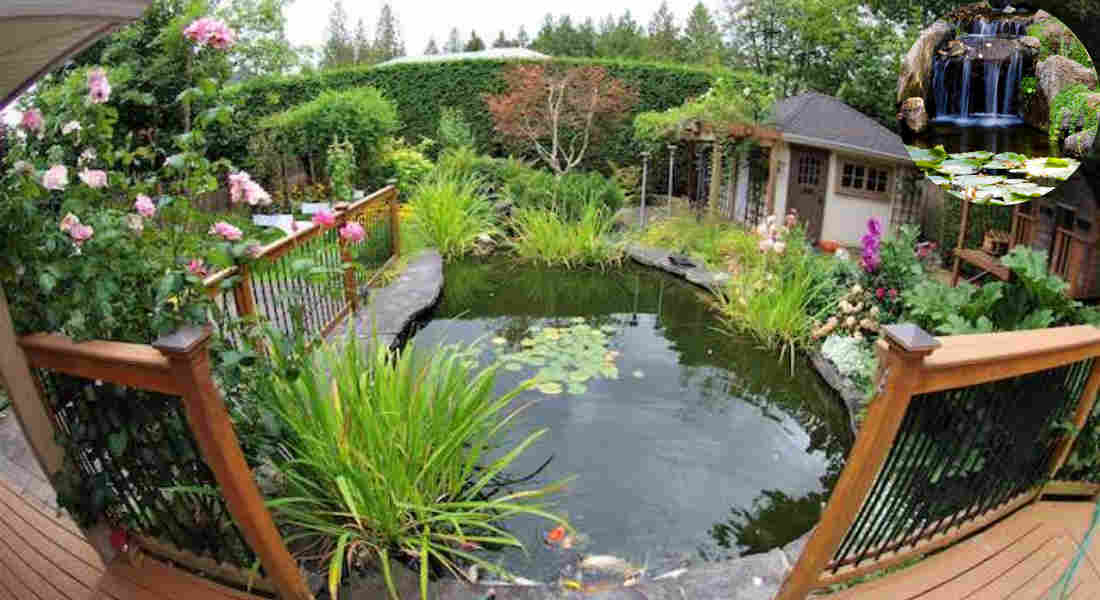
Now, let’s get into the details of building your pond.
Designing Your Pond and Waterfall Layout
Start with a sketch of your pond and waterfall. Decide on:
- Shape and Size: Refer to the planning section for guidance.
- Waterfall Height: Higher waterfalls create dramatic effects, while lower ones feel more natural.
- Flow Rate: A gentle trickle or a strong cascade—this depends on your preference and pump size.
Excavation and Shaping the Pond
- Mark out the pond shape using rope or spray paint.
- Start digging, making the pond shallower near the edges and deeper in the centre (for fish and plants).
- If your garden is flat, build a mound for the waterfall using soil from the excavation.
Installing Pond Liners and Waterproofing
- Lay down a protective underlay to prevent punctures.
- Place the pond liner, ensuring it overlaps the edges by at least 30cm.
- Smooth out wrinkles and secure the liner with rocks.
Constructing the Waterfall Structure
- Build the mound for the waterfall using soil, rocks, or a preformed cascade kit.
- Shape the watercourse with stones, creating ledges for water to flow over.
Installing the Pump and Plumbing
- Choose a pump with the right capacity for your waterfall’s height and flow.
- Connect the pump to a hose that runs up to the top of the waterfall.
- Test the flow and adjust as needed.
Adding Rocks, Stones, and Finishing Touches
- Arrange rocks around the pond and waterfall for a natural look.
- Use mortar to secure stones if needed.
- Protect the liner with geotextile fabric to prevent damage.
Filling the Pond and Testing the Waterfall
- Fill the pond with water and check for leaks.
- Run the pump to test the waterfall flow. Adjust the rocks and hoses to achieve the desired effect.
Landscaping and Planting Around Your Pond
- Add plants like reeds, irises, and water lilies to enhance the pond’s ecosystem.
- Use native UK plants to attract wildlife and create a cohesive look.
Maintenance Tips for Garden Ponds with Waterfalls in the UK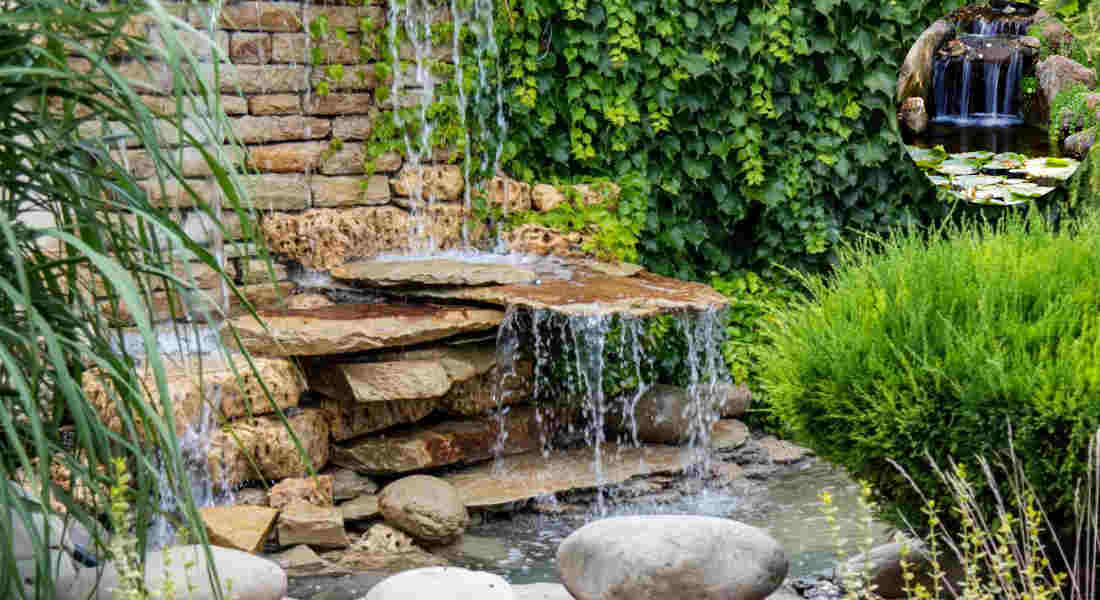
Keeping your pond in top condition requires regular care:
- Cleaning: Remove leaves and debris weekly to prevent clogging.
- Seasonal Care: In winter, protect the pump and filter from freezing by storing them indoors.
- Algae Control: Use barley straw or UV filters to keep water clear.
- Pump and Filter Maintenance: Clean filters monthly and check the pump for blockages.
Inspiring Waterfall Design Ideas for Your Home Garden
Looking for inspiration? Here are some ideas:
- Natural Stone Waterfalls: Use large, flat stones for a rustic, natural look.
- Lighting Effects: Add LED lights under the waterfall for a nighttime ambience.
- Multi-Tiered Cascades: Create a series of small waterfalls for added drama.
You may also read (how can i secure my house garden).

